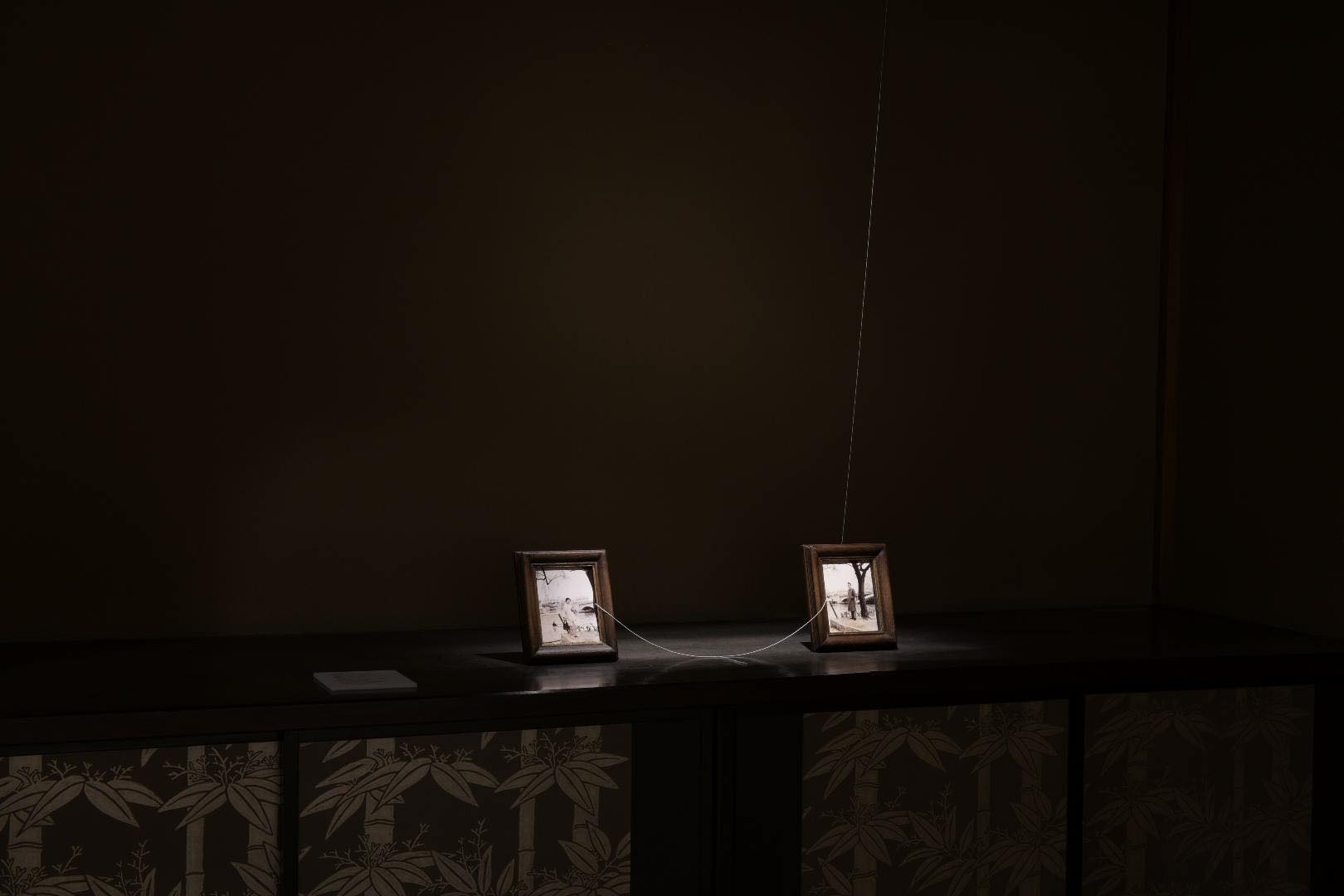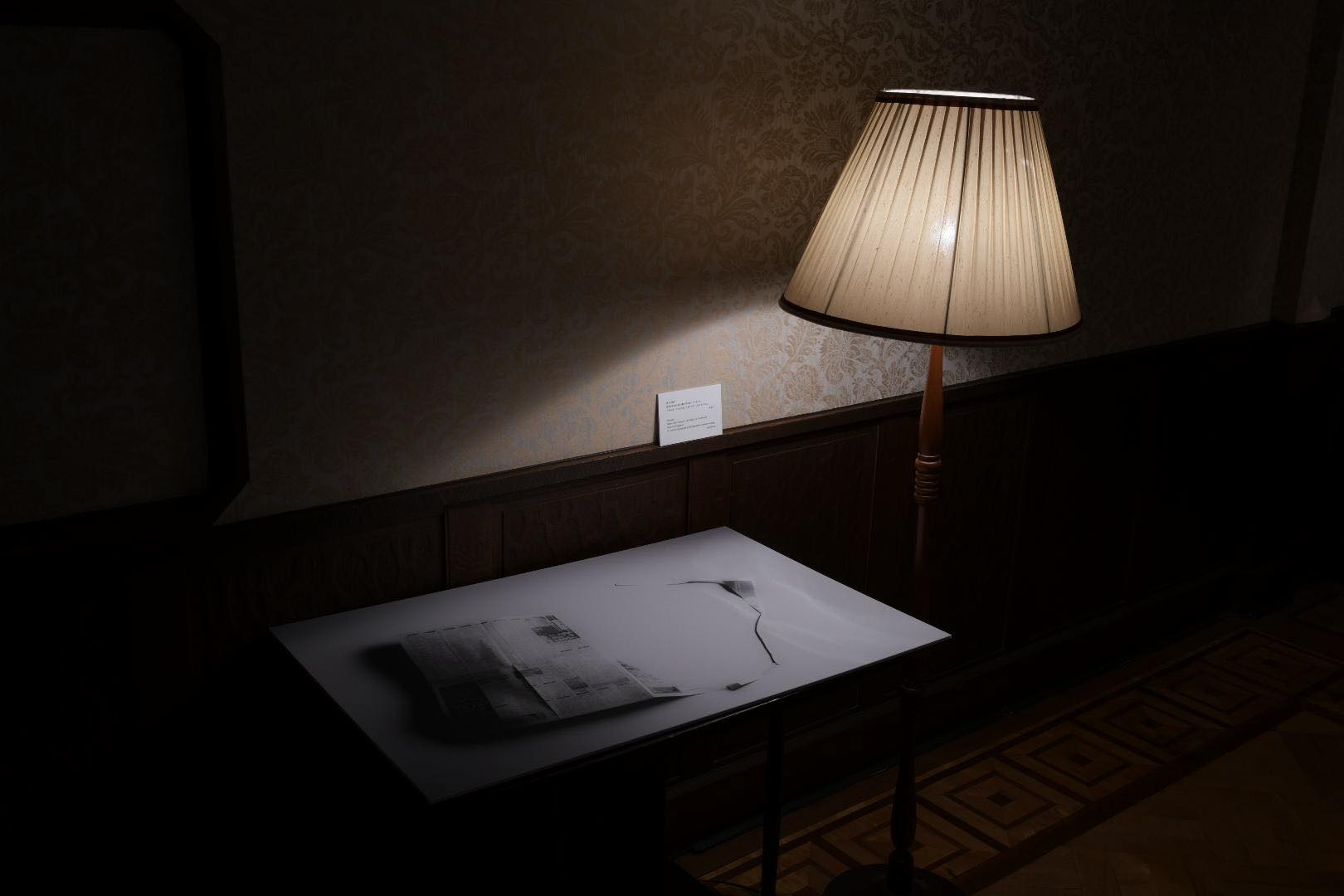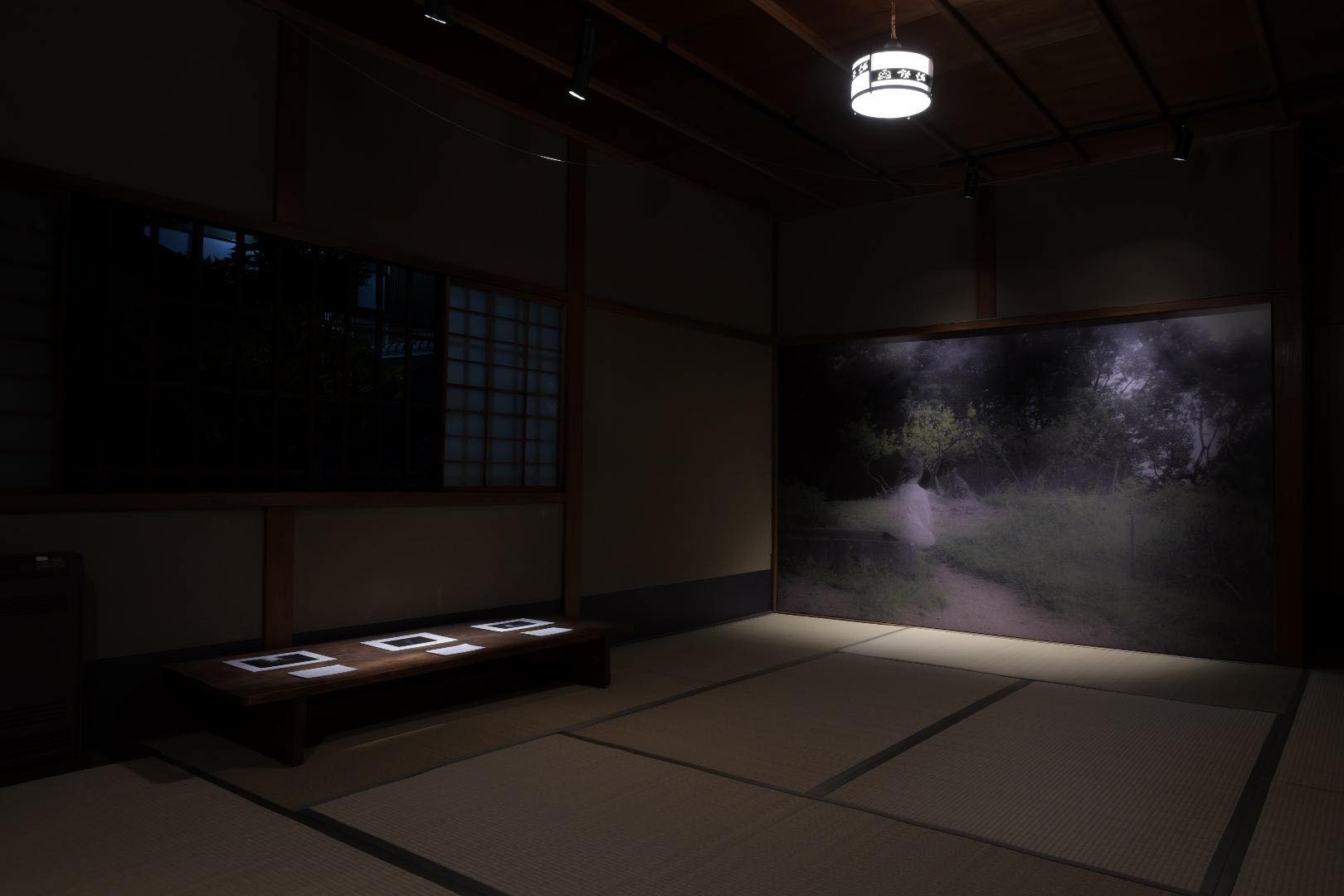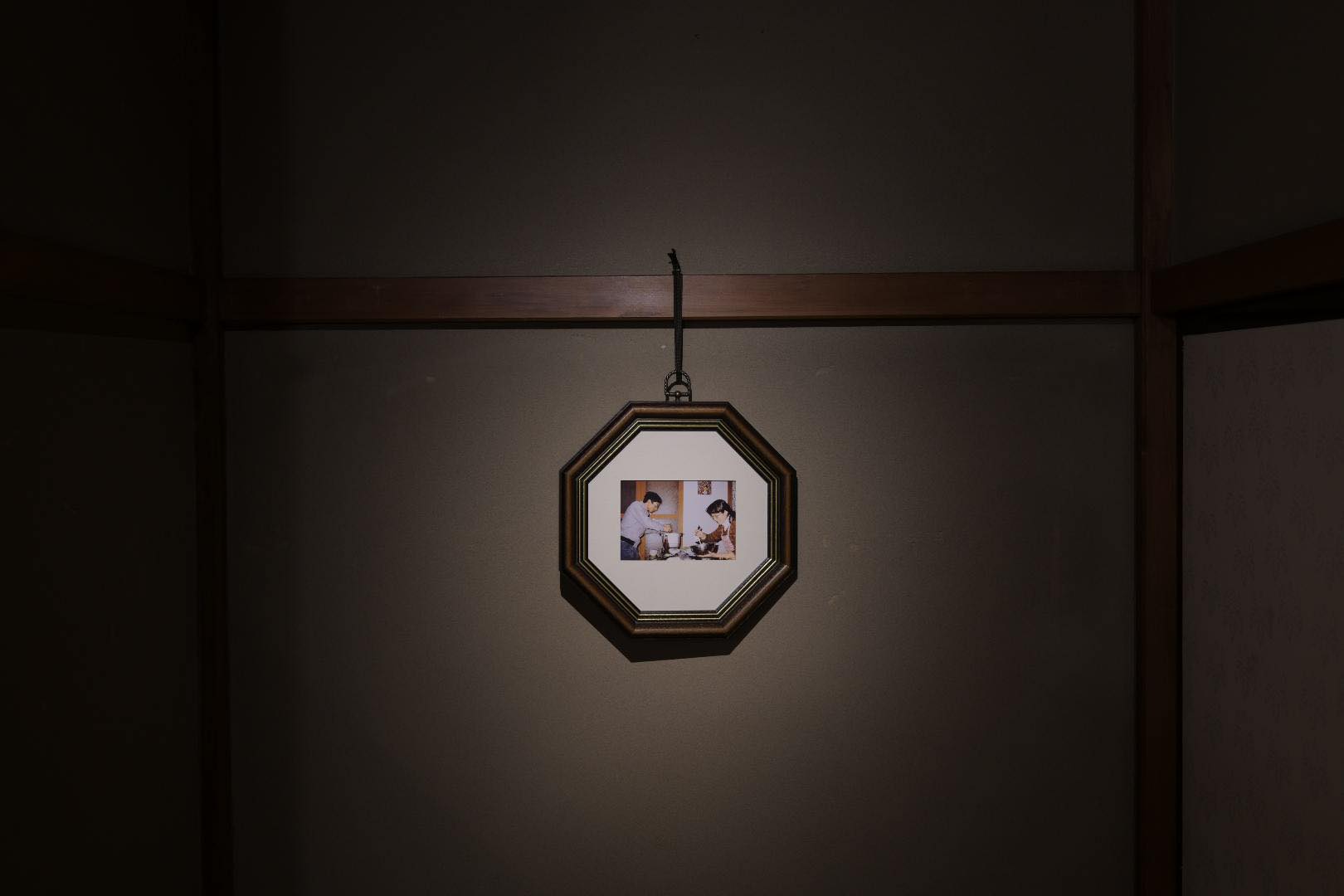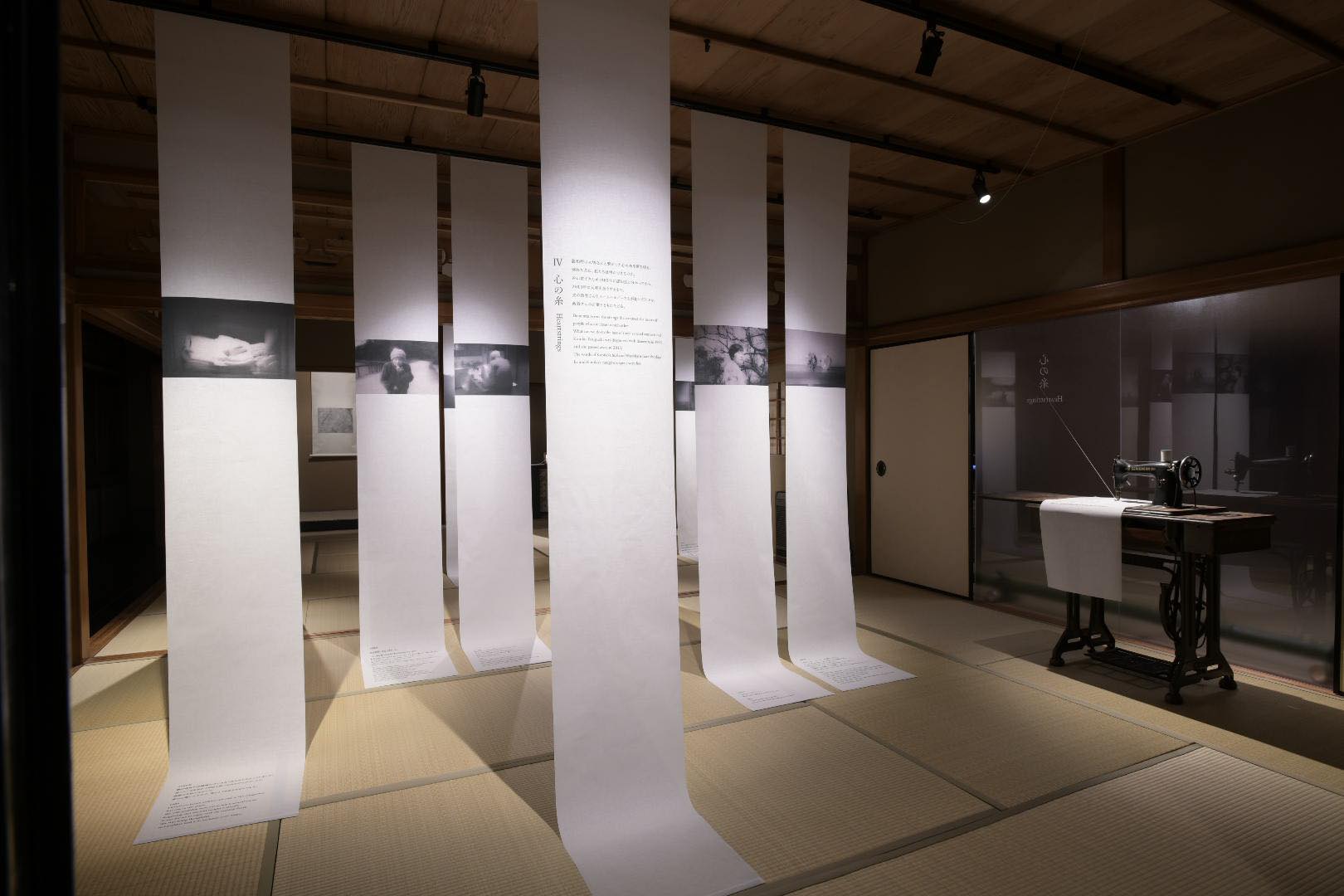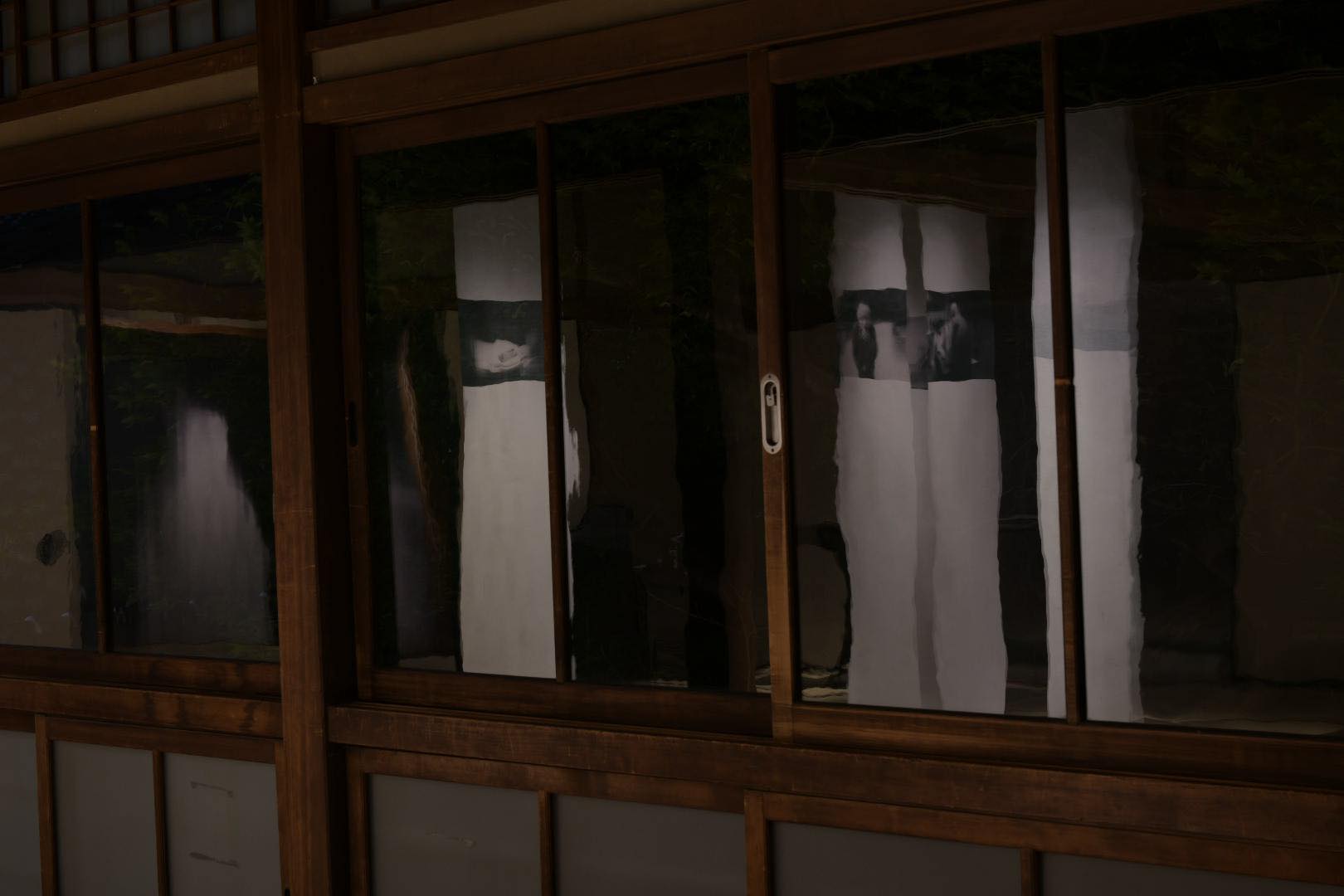Heartstrings – As Photography Plays a Role in Guiding People’s Understanding (from a recent exchange with Kazuhiko Matsumura)
KYOTOGRAPHIE opens on April 14, 2023.
In 2022, RPS Kyoto Branch PAPEROLES’ chief and photojounalist Matsumura was awarded the KG+ Select Grand Prix and I was appointed to curate his exhibition “Hearstrings” as the main program of KYOTOGRAPHIE this year. As the exhibition draws to a close, I would like to share with you a statement that I wrote as a curator in the hope that more people will visit the exhibition until the end.
I first met Matsumura when he was working as a photojournalist for the Kyoto Shimbun, and he participated in a workshop I led in 2011. His photographs, which are sincere, candid, and aesthetically perfect, conveyed a sense of atmosphere and beauty, but I did not find them convincing. Despite this encounter, our relationship continued. He was also a member of the project we were working on with local children after the Great East Japan Earthquake, participating in local activities from Kyoto in his spare time, and guiding them as a photojournalist in photographing and interviewing the children. He was always asking himself what he could do as an individual and as a member of society, and what photography meant to him, even when he was away from his day job.
In 2017, Matsumura was covering Dr. Kazuteru Hayakawa, who dedicated his life to community medicine in Nishijin, Kyoto. At the time, an international conference on dementia was being held in Kyoto. This led him to wonder if he could create a photo story about dementia, which Dr. Hayakawa had been involved in treating for a long time as a doctor. At that moment, this long-term project began. Through this project, Matsumura was further confronted with the question, “What is photography?”
In an attempt to raise public awareness about the disease, Matsumura began to visualize dementia, which is difficult to see as an “image.” The first person he interviewed was a woman whose husband had gone missing. The disappearance of people with dementia has become a social problem. In fact, she learned that her husband had passed away a few months after he had disappeared. The major challenge of how to express the facts and the past events confronted Matsumura as he began photographing. He asked the woman to tell him about the places her husband often visited, and attempted to express his absence by photographing only empty landscapes. Matsumura also photographed the paths that the woman had taken in search of her husband. Matsumura felt that the images only expressed pain and sadness, and that he was merely photographing what people called “wandering,” which is inorganic, gives a bad impression, and was different from the actual image of dementia that he wanted to convey.
Matsumura was conscious of the meaning of each word and the impression it could have on people. In order to avoid misunderstandings, he became more careful in his approach, and he continued photographing his subjects. As he continued to gain experience while searching for his mission to express and communicate, he felt that he was gaining a deeper understanding of dementia, and realized that this change that was happening to him was exactly what he wanted for society and for people. The challenge of visualizing dementia began by documenting the subjects, consulting with them on how to photograph them, seeking “images” that were close to the world around them, and moving toward a form of collaborative production.
The first exhibition space consists of photographs taken based on the testimonies of people with dementia and their families. His photography presents a challenging objective. He wants to express how the worldview of dementia differs between how people generally perceive it versus how Matsumura understands it through his interviews. And then, he attempts to bridge the difference between these two perspectives. Rather than creating a worldview in which people are afraid of dementia, Matsumura’s own photographs serve to guide people’s understanding of the disease. The inspiration he gained through his interviews is combined with his photographs and it developed into an expression. The symptoms of dementia are generally not properly understood. It is known that people forget things, but it is necessary to understand that there are various other disorders, such as loss of sense of time and place, inability to organize thoughts, and so on. For instance, there is another space in the exhibition that represents the relationship between an old couple who woke up one New Year’s morning and the husband found his wife looking at him differently.
She called him “father.” The husband said that this was the moment when he felt disconnected from his wife. It was a very shocking moment, but the husband was able to hold on to his feelings by playing the role of his wife’s “father.” Dementia has so many obstacles, and these obstacles can sever the connection between people. Moreover, this experience also taught Matsumura that people could try to mend or reconnect with those broken relationships.
When Matsumura was struggling with photographic expression of dementia, he asked a man with dementia what he imagined it would be like to express dementia to him, he told him, “Taking a picture is a prayer, and the medium of photography, which can record the present moment, is very sincere.” Then I asked Matsumura, who is trying to learn about dementia even if he does not have it, how he would express the world of dementia in his photographs, and he replied, “Because it is a reality that many people experience, I want to capture the beauty and value of life that is not lost even with dementia, and the small moments of happiness in daily life, and I want people to notice them. I would like to see a society in which each individual can see the subtleties of life that shine through the aging process. Sometimes we have to face sad realities, but I want to take photos of people with dementia that capture their precious time, and that are filled with feelings celebrating life.”
I believe that the role of the photographer is fulfi lled when people are moved by his or her photographs. And they must not only think about it, they must make it happen. In observing Matsumura’s project, I realized that he is prepared to do so. I hope that this exhibition will lead to further opportunities and that the project will continue to grow.
Yumi Goto | Curator
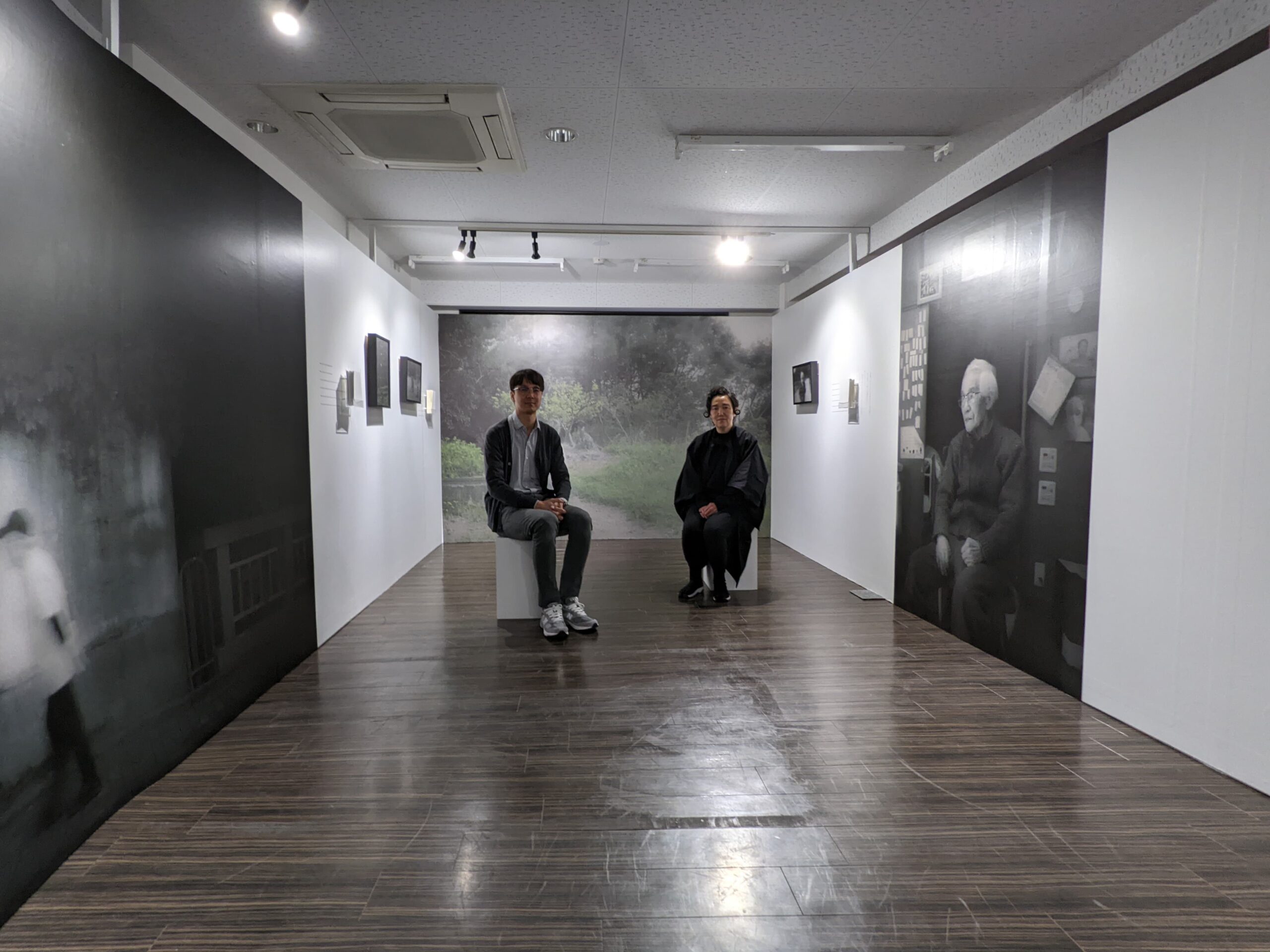
View of the exhibition at KG+Select in 2022, the winner of the KG+Select Grand Prix, and the opportunity to exhibit in the main program of KYOTOGRAPHIE in 2023. Matsumura (left) and Goto (right) at that time.
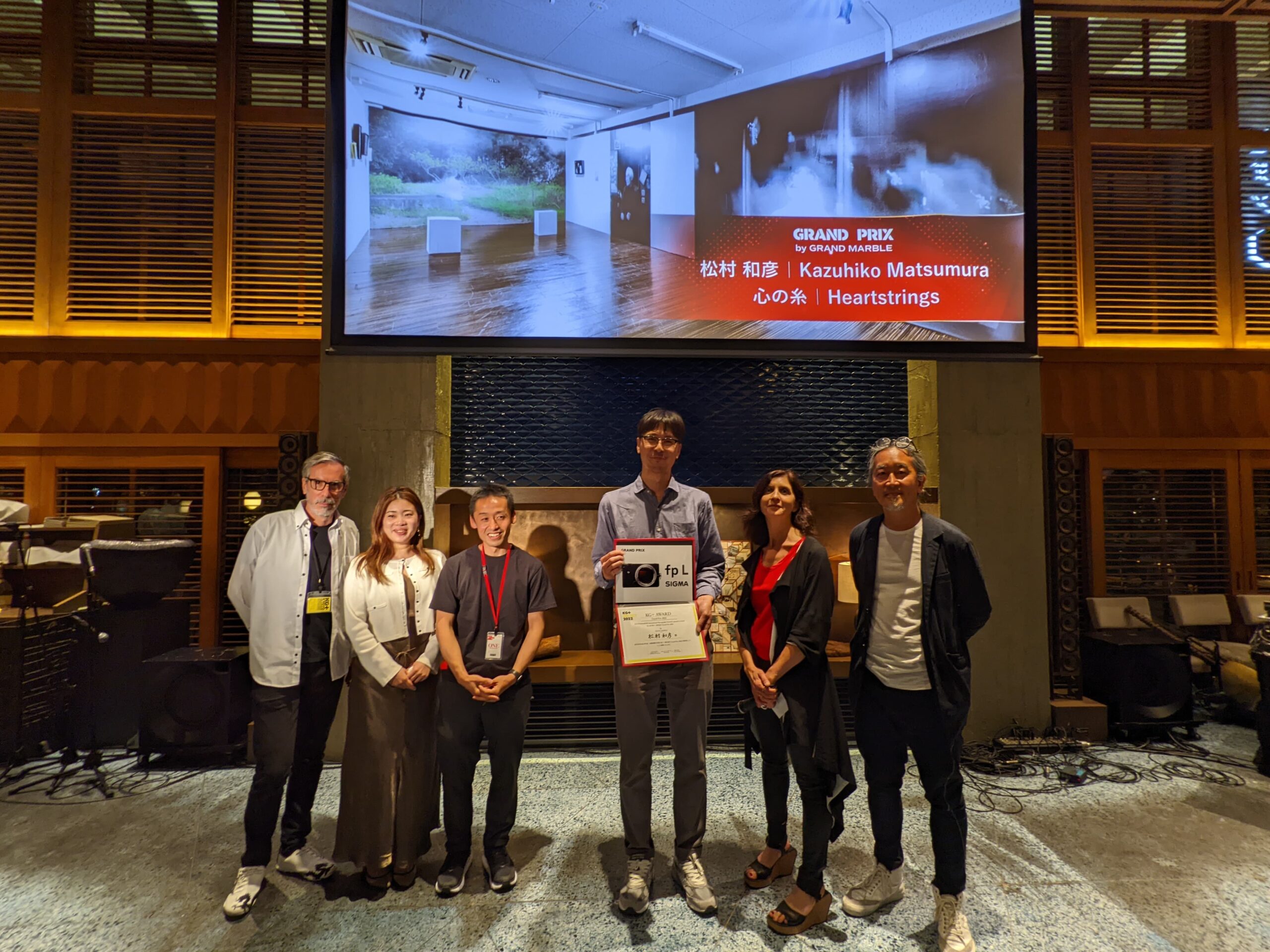
Matsumura at the announcement of winning the KG+ Select Grand Prix in 2022, KG+ organizers (left), and Lucille Reyboz and Yusuke Nakanishi of KYOTOGRAPHIE (right), who prepared the most suitable venue for “Heartstrings” at Hachikuan, and guided us toward the realization of the exhibition.
The following is a view of the exhibition “Heartstrings,” the main program of KYOTOGRAPHIE 2023.
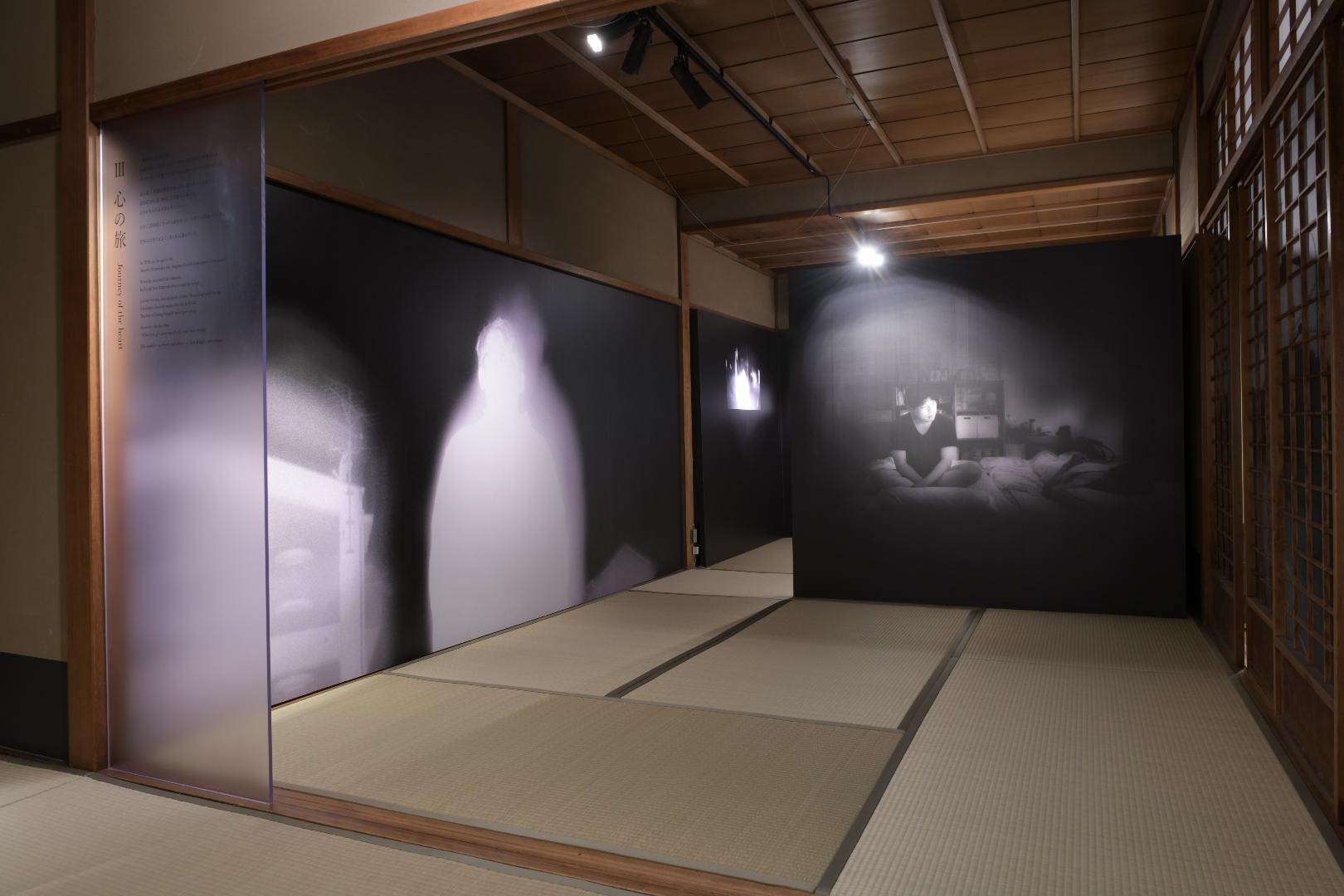
Heartstrings / Kazuhiko Matsumura
Please come to the exhibition site and actually take a look at the Heartstrings.
And finally, I would like to express my sincere gratitude to everyone involved in this exhibition and the production of the newsprint for their unparalleled efforts


